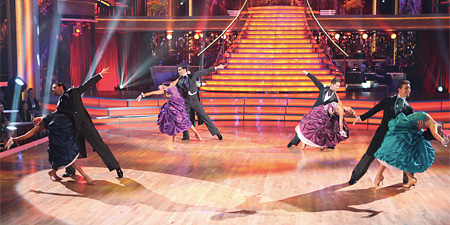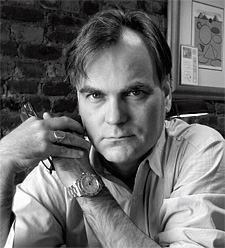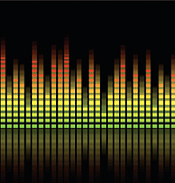Seeking CALM at NAB
LAS VEGAS: As the clock ticks down to Dec. 13, when the CALM Act goes into effect, broadcast and cable companies are putting into place a variety of best practices to ensure compliance with the loudness regulations. Yet challenges still remain.
At the upcoming NAB Show, attendees looking for hardware and software loudness measurement, monitoring, processing and logging products to ensure CALM Act compliance will have plenty to see. A virtual who's who of broadcast companies from A-W have already announced they will have new, revised and existing loudness solutions at the show.

Bruce Arledge, production mixer on “Dancing with the Stars” and other entertainment shows, relies on three types of metering to keep his mix within the loudness spec. "For major cable companies and for most networks we're on the other side of the hard work," said Roger Charlesworth, an independent media technology consultant and executive director of the DTV Audio Group. "Practices are defined; they've figured out how to do them cheaply and scale them efficiently."
RELATIONSHIP WITH MVPDS
The CALM Act put the responsibility for compliance on the big cable companies, especially, and the major networks. "The heavy lifting in policing it has been done by the MVPDs," said Charlesworth. "They've invested in server technology and are processing all of their inserts."
They have also worked with the networks, informing them when they have been out of compliance, he said. That has encouraged broadcasters to improve their performance.
But, he cautioned, "What remains a concern are mom and pop cable companies and smaller stations. There's still this danger of people using too aggressive processing. I think it's seductive to think you can buy a box and not have to worry about it."

Roger Charlesworth Lon Neumann, consulting engineer with Neumann Technologies and a specialist in audio for DTV, agreed. "There are forces at work that encourage using the easiest, least expensive, set-and-forget solutions. Such solutions may have the unintended consequence of returning us to the dark days of NTSC audio."
Craig Else, an engineer at Fox Television's KTTV 11 and UPN 13 in Los Angeles, mixes primarily news and entertainment shows. "We do try to [meet a target loudness level]," he said, but noted the difficulty in anticipating a sudden loud noise during a live program.
"I have a compressor on all of those channels at about a 3:1 ratio, really fast. If it goes over that it gets caught, either at master control or at the tower. We have brick-wall limiters at those positions."
That downstream processing can certainly degrade the audio. "If you're mixing a little too hard and you go home and hear the repeat of the show it's pumping and doing all sorts of weird things," Else reported.
Bruce Arledge, production mixer on "Dancing with the Stars" and other entertainment shows, relies on three types of metering—a combination of a Linear Acoustics LQ-1000, VU and Durrough peak meters—to keep his mix within the loudness spec. "I have a network standard I have to adhere to, which for ABC is –24 LKFS," he said.
"I'm very disciplined in my unity gain structure; I'm old school," he commented. But even if the commercials hit –19 or –18 dB in the breaks, he noted, "I can't adjust my mix to that level because then I'm not adhering to the network standards. There's nothing worse than getting those memos on Tuesday after the show: 'Bruce, you hit a –19.'"
But as Else pointed out, "The [meter] needles can say one thing but your ears can say another." Neumann again could not agree more. He—along with others in the industry—is advocating for standardized monitoring practices in broadcast, similar, if not identical to, cinema practices.
Learn About Loudness
Broadcasters looking for guidance on how to handle audio loudness issues will want to set aside some time on Monday, April 16 at the NAB Show, where the subject will be addressed in three sessions. Thomas Lund, HD development manager for TC Electronic will cover “The CALM Act and Cross-platform Broadcast” at 10:30 A.M. Lund will present a paper that discusses open standards promoted by the ATSC, EBU and ITU that allow for audio normalization regardless of the platform.
At 11, Karsten Hansen, CEO of DK-Technologies, will present “Audio Loudness: Get it Right From the Start,” discussing the goal of tackling the loudness issue at the point of content creation, rather than fixing it in the mix or at the transmission stage. At 11:30, Vivek Koul, product manager for Interra Systems, will cover “Loudness Measurement and Control,” discussing traditional loudness measurement techniques and the shortcomings associated with them.
Skip Pizzi, director of digital strategies for NAB, will moderate the sessions, which are part of the Broadcast Engineering Conference and will be held in Room S225 of the Las Vegas Convention Center. To register, visit the Broadcast Engineering Conference page at www.nabshow.com. "In the live environment, the mixers will mostly use their ears with just occasional glances at the loudness meter to confirm they're on target," he said. Monitoring is key here, he said: "The benefits of standardizing the monitoring environment have been well demonstrated in cinema. It needs to be the same in broadcast."
That is especially true for movies played on television, he continued. "It's not enough to simply send the theatrical mix to air. Ideally, the program should be mixed specifically for TV. If not that, at a minimum, it should at least be remastered for TV."
TWO APPROACHES
But there are fundamental problems underlying attempts to manage loudness, according to Neumann, due to differing opinions, codified in various recommended practices, regarding exactly how loudness should be measured.
"[T]wo distinctly different approaches to the general problem of loudness management in DTV are in practice in the world—the North American approach and the European approach," he said. "There has been the explicit precept that the metadata parameter known as dialnorm must tell the truth about the level of the dialogue" in the ATSC's approach, he said. But in Europe, audio is not necessarily encoded as AC-3—Thus has no associated metadata—and loudness measurements average the entire soundtrack, not just dialog.
Annexes J and K to the ATSC A/85 Recommended Practice further confuse matters. "For long form [programs], the task is still to measure the loudness of dialogue as the Anchor Element," said Neumann. "For short form, the task is to average the measurement of all content for the duration."
Dolby Labs and others have proposed an elegant solution, centered on Dolby's proven and well-liked Dialogue Intelligence, which incorporates dialogue-gating technology. Dolby has made Dialogue Intelligence available royalty free to solutions developers.
"There are currently ongoing discussions that suggest that perhaps the best approach would be to use dialogue-gating for long form measurements, in turn using level-gating [the European approach specified in ITU-R BS.1770-2] for the short form measurements," Neumann reported. "Thus, we would have the best of both worlds."

Get the TV Tech Newsletter
The professional video industry's #1 source for news, trends and product and tech information. Sign up below.
Steve Harvey began writing for Pro Sound News and Surround Professional in 2000 and is currently senior content producer for Mix and a contributor to TV Tech. He has worked in the pro audio industry—as a touring musician, in live production, installed sound, and equipment sales and marketing—since November 1980.
